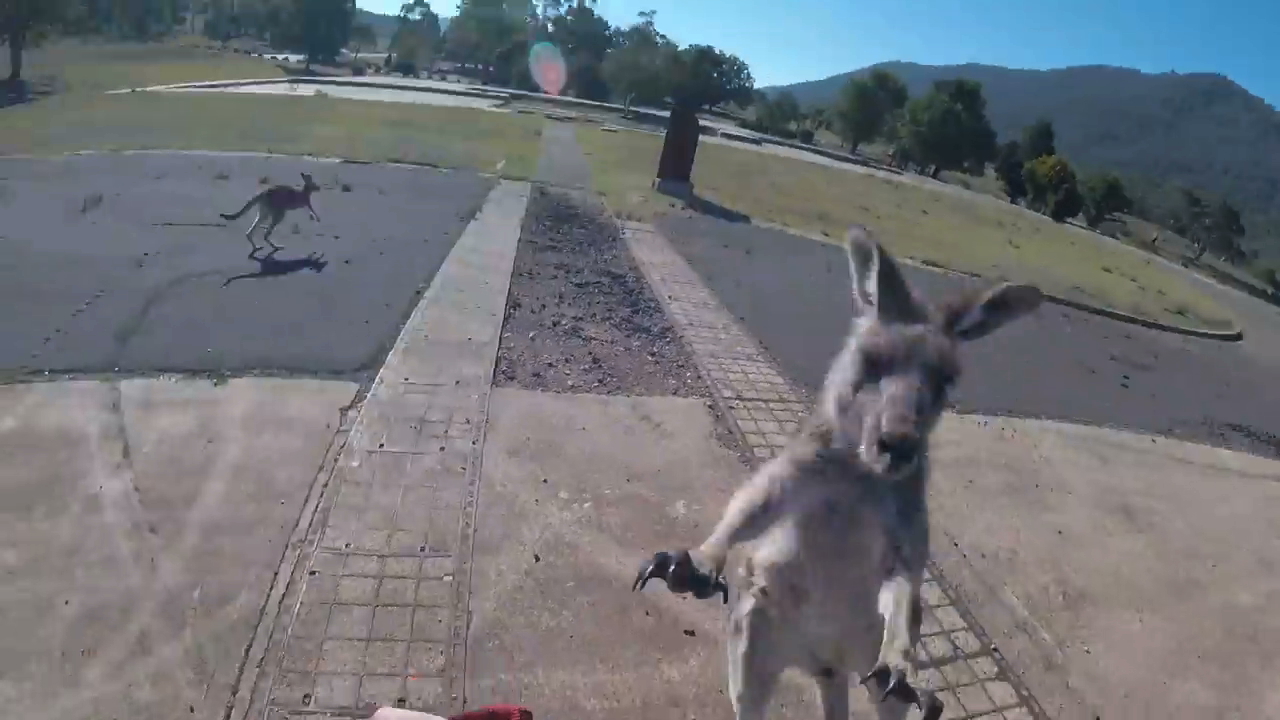Kangaroo with a Mean Right Hook Foils Paraglider's Perfect Landing

A paraglider's recent and unexpected close encounter with a belligerent kangaroo left him feeling a little punchy.
Jonathan Bishop had been paragliding cross-country near Canberra, Australia, on March 7, documenting his flight on video that he later posted to YouTube, according to a description of the footage.
But while the birds-eye view from above was breathtaking, perhaps Bishop should have been paying closer attention to what was waiting for him on the ground — a human-size marsupial with a mean right hook. [Marsupial Gallery: A Pouchful of Cute]
After about 2 hours in the air, Bishop started his descent. He aimed toward a landing pad at the Orroral Valley tracking station, a site formerly used to support Earth-orbiting satellites.
Bishop's descent video lasts only 34 seconds. At the start, nothing appears to be out of the ordinary on the ground far below. But if you're watching for kangaroos, you can see a pair hopping into view about 3 seconds into the video, outside the perimeter of a circular clearing where Bishop is coming in for a landing. Moments before he touches down, a kangaroo can be seen hopping toward him, approaching alarmingly fast.
"I thought it was being friendly," Bishop said on YouTube. But the kangaroo's greeting turned out to be a boisterous boxing maneuver; it attacked Bishop twice before hopping away.
The incident was captured by Bishop's helmet camera and quickly went viral; it has since been viewed on YouTube over 1 million times.
Sign up for the Live Science daily newsletter now
Get the world’s most fascinating discoveries delivered straight to your inbox.
Though Bishop doesn't identify the kangaroo species, it appears to be an eastern grey kangaroo (Macropus giganteus), which is found across eastern Australia in the millions and can hop as fast as 39 mph (64 km/h), according to the Australian Museum.
With so many kangaroos living in close proximity to people, interactions become inevitable (though Bishop's experience was unusually aggressive). In July, persistent drought drove thousands of eastern grey kangaroos into the city of Canberra to search for food, where they gobbled up green grass in parks, schoolyards and sports fields, Australian news site News.com reported.
- 8 Animal Encounters That Went Entirely Wrong
- Photos: Kangaroos Use Tails to Walk
- Animal Sex: How Kangaroos Do It
Originally published on Live Science.

Mindy Weisberger is an editor at Scholastic and a former Live Science channel editor and senior writer. She has reported on general science, covering climate change, paleontology, biology and space. Mindy studied film at Columbia University; prior to Live Science she produced, wrote and directed media for the American Museum of Natural History in New York City. Her videos about dinosaurs, astrophysics, biodiversity and evolution appear in museums and science centers worldwide, earning awards such as the CINE Golden Eagle and the Communicator Award of Excellence. Her writing has also appeared in Scientific American, The Washington Post and How It Works Magazine. Her book "Rise of the Zombie Bugs: The Surprising Science of Parasitic Mind Control" will be published in spring 2025 by Johns Hopkins University Press.









